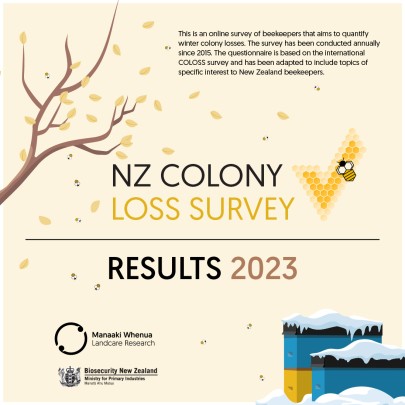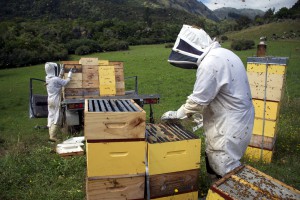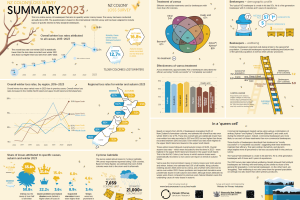
Around half of all beekeepers nationwide complete the survey each year. Because the survey gets such good engagement, the data are robust and can be relied upon to show useful trends for primary producers and the honey industry.
Survey topics include the number and nature of over-winter colony losses, queen health and performance, indicators of diseases and parasites, treatment of Varroa, supplemental feeding, and colony management.
The latest results from winter 2023, including detailed infographics and data, are now available at the links below. Results are based on reports from 42.6% of beekeepers managing 35.0% of New Zealand’s honeybee colonies.
Overall, the survey estimates the overall colony loss rate over winter 2023 to be 12.7%. These overall rates are statistically lower than over-winter loss rates recorded in 2021 and 2022 but are higher than those recorded between 2015 and 2020. Over-winter loss rates were highest in the upper North Island and lowest in the upper South Island.
These winter losses followed overall autumn losses of 16.8%. Overall autumn loss rates – which were included for the first time in 2023 – were highest in the upper North Island and lowest in the upper South Island. This is the first NZ Colony Loss Survey in which autumn losses were systematically recorded, so we cannot yet report on trends in autumn losses.
Varroa was the main cause of colony losses over both autumn and winter, with around 6% of colonies lost to Varroa in each case.
This year, the survey also asked about well-being among beekeepers. Results showed that hobbyist beekeepers are ‘thriving’, with wellbeing scores similar to those of the general New Zealand population. Commercial beekeepers, on the other hand, are ‘struggling’. Their wellbeing is not only lower than the general population, on average, but also lower than other primary producers.



